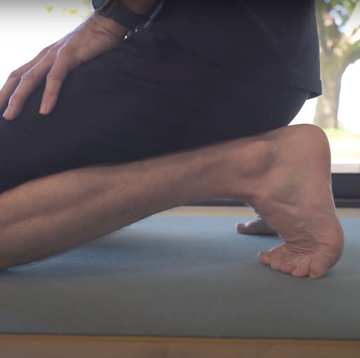Injury can occur to normal and ageing menisci; it tends to occur in the posterior portion and is seven times more common on the medial side, which bears the brunt of your weight. There are various types of tear to the menisci, depending on the cause, but the effect is usually the same – pain and disability.
Symptoms
You will be lucky if a suddenly-torn meniscus doesn’t cause intense pain, probably following a twisting injury, but not uncommonly after full bending of the knee. The pain is usually on the joint line and the knee may feel unstable. It is realised now that a meniscus tear frequently occurs in conjunction with other damage to the collateral or cruciate ligaments, so the knee may swell with an effusion of clear serum and/or blood, and a tear which twists on itself can cause the joint to lock. You may well have been a rugby or football player in the past, and have suffered previous knee injury.
Signs
Your doctor will be able to demonstrate your knee tenderness and find swelling. The McMurray test involves flexing and extending the knee slowly, while rotating the limb below the knee. If positive, it will hurt you. Quadriceps wasting rapidly occurs with disuse.
Medical investigation
The diagnosis is not always clear-cut, so an x-ray will help to eliminate complications and arthrography with a dye injection into the knee can improve diagnostic accuracy.
Best wireless headphones?
Back pain from running? This could be why Best wireless headphones, a collateral ligament tear or arthritis. Also, loose tissue that may float off within the damaged joint, – there’s quite a choice.
Self-treatment
Although RICE and a change of activity could ease the symptoms, self-help is probably not going to relieve any but the most minor and trivial of meniscal injuries.
Medical treatment
With the advent of arthroscopy, in which a tiny fibre-optic television camera can be used to examine a joint, the diagnosis and treatment of meniscal injuries has been transformed. No longer is the whole knee joint exposed at operation, and all the cartilage removed, but two tiny incisions are made, one for the arthroscope and the other to stretch and fill the joint with sterile water, allowing accurate visualisation of the injury. Delicate snipping away of as little of the injured meniscus as possible limits the advance of degenerative changes in following years. In some individuals it has been shown that the meniscus has the ability to repair itself, and meniscal replacement and regrowth are potential treatments for the next millennium. After surgery, physiotherapy and rehabilitation are vital to gain full, pain-free function.
What else could it be
Running through a meniscal injury is an open invitation to long-term disability. Following arthroscopic treatment you would hope to be fully rehabilitated and running freely, even if not racing fit, well inside three months.













